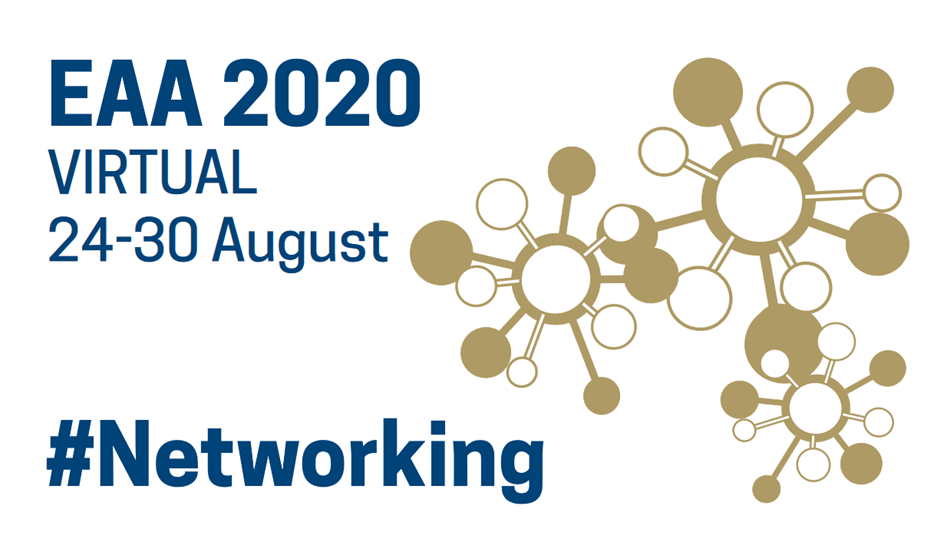One of the perks of working in academia is going to conferences. Meeting colleagues from other institutions (and countries) and talking to them (sometimes even about your work) is tremendously rewarding. Despite always being knackered after even a single day of sitting on my backside listening[1], I almost invariably come away inspired and motivated for my research. I have made long-term friends at conferences and some very interesting collaborations trace their origins to casual chats at conferences.
Besides the pleasure of spending time with (at least partly) like-minded individuals in places that are often worth a visit in their own right (though you mostly see the insides of lecture halls…), conferences are a great way to draw attention to new projects that are being developed. In the early stages of a project it is very valuable to get outside feedback and, possibly, help from the wider disciplinary community. For all these reasons we were looking forward to attending our first conferences for the Arch-I-Scan project. We were planning to go to Split (Croatia) and Budapest (Hungary), which would have been great in itself, but also would have given us the opportunity to showcase the Arch-I-Scan project at some of the major conferences in Roman archaeology (the Roman Archaeology Conference) and European archaeology (the European Association of Archaeologists (EAA) annual meeting).
That is when the pestilent horseman of the apocalypse galloped onto the scene. In the context of increasing lockdowns, the organisation of the Roman Archaeology Conference sensibly decided to postpone the conference to 2021, and the Arch-I-Scan project had to be paused because we could not meet with volunteers to take our photographs and our project partners had to close their doors. Instead of travelling to exotic locations to meet with friends and colleagues, we had to adjust to a situation of isolation, remote working and home-schooling.

The EAA had a bit longer to prepare and took the decision to go ahead with the conference, but in a wholly virtual way. I certainly did not envy them in their task of running a virtual conference with over 1800 papers smoothly. I will admit I was rather sceptical at the beginning. Discussion is often a vital part of a session’s success, and without face-to-face interaction, the dynamic would be very different. Would sessions still be as stimulating, or would it simply be a succession of boring papers, after which everybody sits quietly behind their own screen?
I had the honour of presenting for the Arch-I-Scan project, so I set to work on the most pleasurable part of any conference presentation: putting together the PowerPoint presentation and seeing how many silly references to children’s books or films I can reasonably fit in a serious academic talk. I managed Harry Potter and Wall-E this time, and even squeezed in Asterix, Isaac Asimov, Frankenstein and an obscure reference to Warhammer 40.000, so I was pretty pleased with myself.

On behalf of the Arch-I-Scan team, I introduced the project and described the way we go about gathering our data. I also discussed the ethical considerations involved in the development of an AI machine that is used in (archaeological) research. These is not only concerned with the ethics of who is responsible for any possible negative side effects, but also with what I call research-ethics: to what extent can archaeologists worth their salt put their trust in a machine that is, to a degree, a black box? I think this should be a significant threshold to cross for a conscientious researcher. In Arch-I-Scan’s case, though, I am inclined to think that we are justified to take this step (otherwise I would not be working on the project). The machine is ultimately not making any interpretative decisions. That is all firmly in the hands of the human archaeologists. All the machine does is automate the conceptually easy, yet very time-consuming, task of identification. It therefore generates no new knowledge. Any data that the machine generates could, in theory, be checked against the original material.
“Never trust anything that can think for itself if you can’t see where it keeps its brain”
– Arthur Weasley
Harry Potter and the Chamber of Secrets
Speaking of trusting machines, on the day of the paper, of course my technology failed twice before I was able to deliver the paper. I learned interesting things that day about how my body deals with stress while frantically switching to a different machine and downloading a different browser. Overall, the virtual conference far surpassed my expectations. With a chat function facilitated discussion simultaneous to the paper, there was a measure of the spontaneity that characterises the better conference discussions. Massive kudos to the organisers for pulling off such a Herculean task! The only thing that could not be simulated were the open-ended, unplanned dinner conversations that lead to the best results… This, of course, was unavoidable and will have to wait until the time when human contact is no longer a source of anxiety and returns to the pleasure it was before. Here’s hoping!
[1] It never ceases to amaze me how exhausting conferences are. At least in my long-haired hellraising days (well, long-haired anyway) at least there was the excuse of three hours of sleep because of the conference parties. Now it is just the sitting down that gets me…


 Subscribe to Daan van Helden's posts
Subscribe to Daan van Helden's posts
Recent Comments